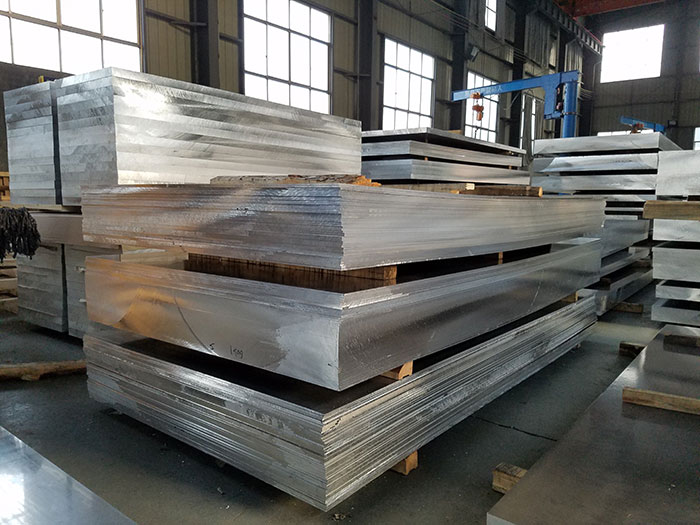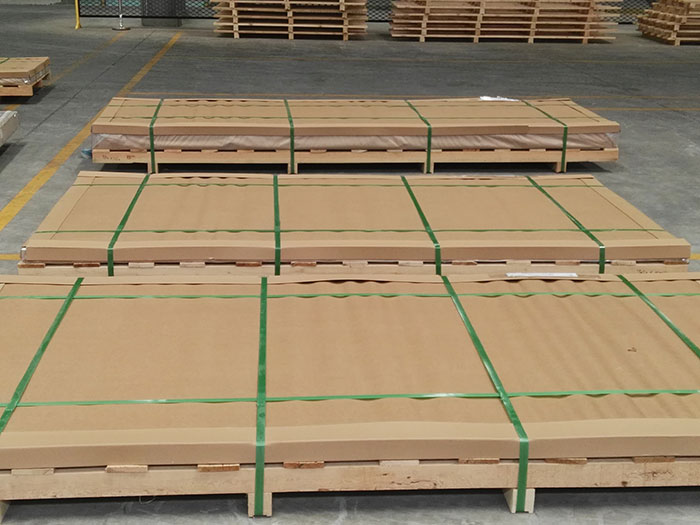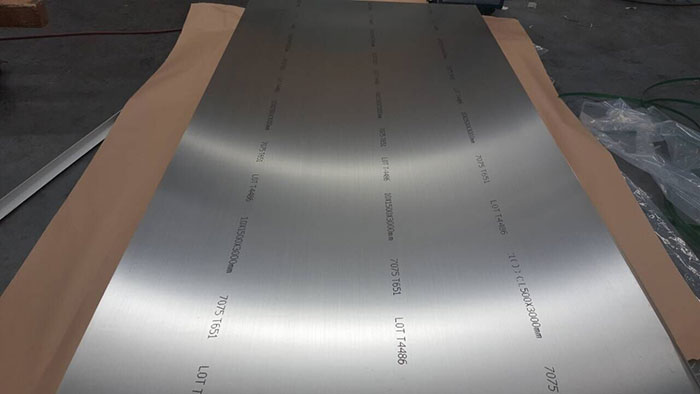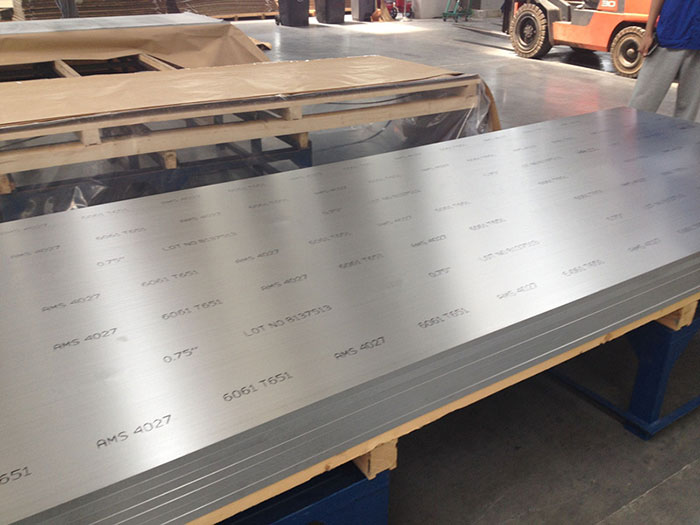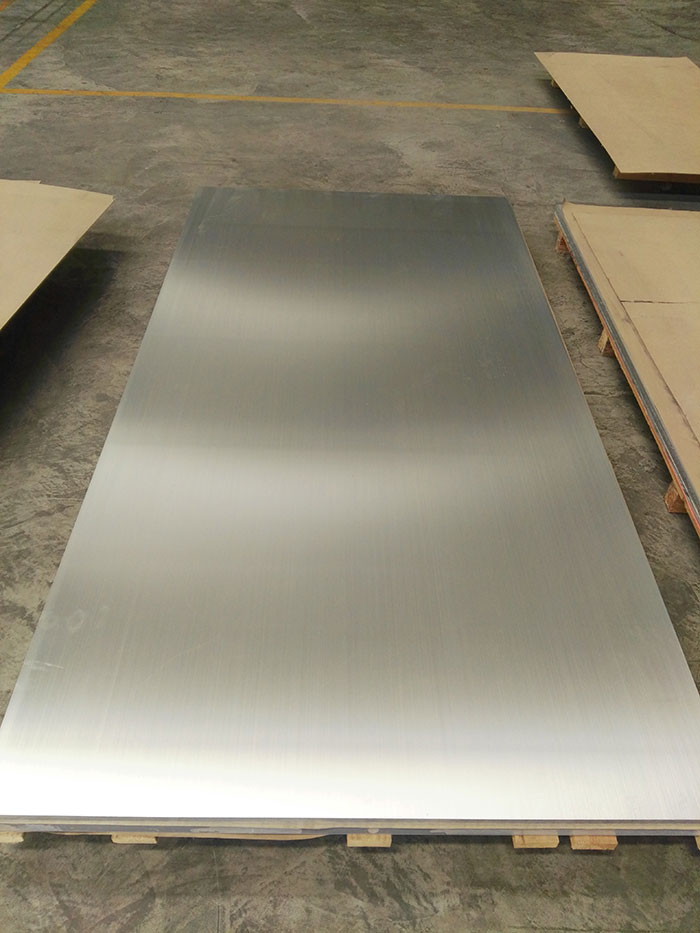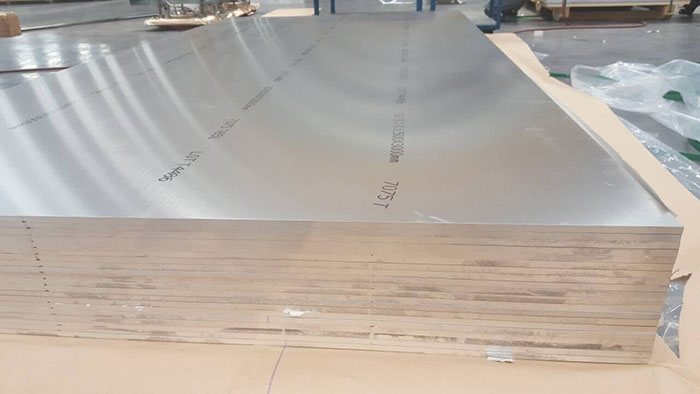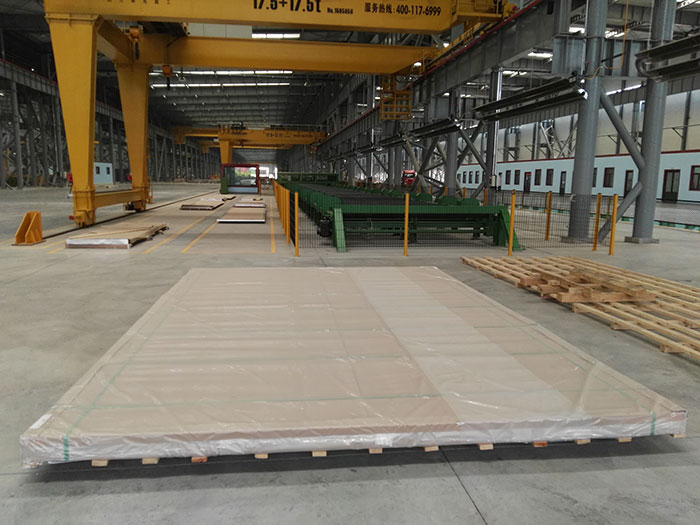The density of the 2091 alloy is 8% lower than that of the 2024 alloy, and the modulus of elasticity is 7%, while the other properties are equivalent to that of the 2 * * * and 7 * * * system alloys. The microstructure of 2091 alloy is determined by the thickness of the material and the production enterprise. In general, the material with thickness of >3.5mm has non recrystallized microstructure, while thin sheet material is a elongated recrystallized grain structure.
The mechanical properties of the 2091 alloy below125℃ T84 are relatively stable. The spalling corrosion property of the alloy is equivalent to that of the 2024 T3 alloy, which depends on the microstructure and quenching speed of the material. The greater the degree of non recrystallization, the more uniform the exfoliation corrosion. The relationship between the stress corrosion cracking resistance and microstructure of the
2091 alloy sheet is opposite to the above. The more the fibrous structure is, the higher the threshold value of stress corrosion cracking.
Chemical Composition of 2091
Alloy Si Fe Cu Mn Mg Cr Li Zn Ag Ti Zr Others Al
Each Total
2091 0.20 0.30 1.8~2.5 0.1 1.1~1.9 0.1 1.7~2.3 0.25 0.20~0.70 0.1 0.04~0.16 0.05 0.15 Remainder
The fatigue properties of 2091 T84 alloys are at least not lower than that of 2024 alloy materials. In general, the chemical milling of 2091 alloys and the properties of surface treatment (anodic oxidation, chemical conversion and membrane removal) are equivalent to those of 2024 and 7075 alloys. But the salt spray test shows that the protective performance of the oxide film of the 2091 alloy is much stronger than that of the traditional alloy.
|
Chemical Composition of 2091 |
|
Alloy |
Si |
Fe |
Cu |
Mn |
Mg |
Cr |
Li |
Zn |
Ag |
Ti |
Zr |
Others |
Al |
|
Each |
Total |
|
2091 |
0.20 |
0.30 |
1.8~2.5 |
0.1 |
1.1~1.9 |
0.1 |
1.7~2.3 |
0.25 |
0.20~0.70 |
0.1 |
0.04~0.16 |
0.05 |
0.15 |
Remainder |
|
Alloy |
Alloy Series |
Main features |
σb Value /MPa |
Working Temperature/℃ |
|
2091 |
Al-Cu-Li-Mg-Zr |
Compared with 2024 T3, the heat treatment strengthened alloy has a 8% reduction in density and a 7% increase in elastic modulus. It can be used as an aircraft structural part with lower strength and toughness and partially replace 2024 T3 alloy. The variety has thin plate and thick plate, its performance changes with the state. |
- |
<100 |
|
Physical Property of 2091 aluminum lithium alloy sheet plate |
|
Thickness/mm |
Longitudinal performance
|
Long transverse performance |
45º direction performance |
|
RP0.2/MPa |
Rm/MPa |
A/% |
RP0.2/MPa |
Rm/MPa |
A/% |
RP0.2/MPa |
Rm/MPa |
A/% |
|
包铝(prEN 6003) |
|
0.79~3.45 |
265 |
364 |
10 |
265 |
384 |
10 |
236 |
350 |
15 |
|
3.45~6.0 |
334 |
418 |
8 |
290 |
418 |
10 |
256 |
364 |
15 |
|
未包铝(prEN 6005) |
|
0.81~3.3 |
290 |
394 |
10 |
295 |
408 |
10 |
265 |
379 |
15 |
|
3.3~6.0 |
359 |
448 |
8 |
325 |
359 |
10 |
285 |
398 |
15 |
|
6.0~12 |
359 |
448 |
8 |
325 |
359 |
10 |
285 |
398 |
15 |
|
12~40 |
354 |
438 |
7 |
320 |
423 |
8 |
275 |
394 |
13 |


